Currently, the disposal of medical waste is of particular importance. Not only their number, but also variety is growing every year. They become more dangerous, and the risk of contracting third parties increases.
Medical waste: what is it?
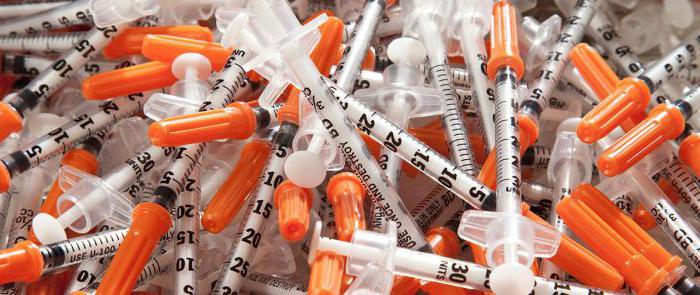
First you need to understand what should be understood as medical waste. These are not only syringes, ampoules and systems that are familiar to everyone. The concept is quite capacious and includes everything that is formed in medical institutions (dispensaries, hospitals, hospices, pharmacies, educational institutions of the corresponding profile, sanatorium-resort organizations, etc.) as a result of their activities. So, the disposal of medical waste involves the neutralization and destruction of X-ray films and solutions, personal protective equipment (gloves, gowns, shoes, etc.), drugs (expired, falsified, confiscated) and ampoules from them, disposable systems and syringes, used dressings, contaminated blood and excised organs, infected wastes from canteens and digests, etc. This is just a basic, not an exhaustive list.
Medical waste hazard
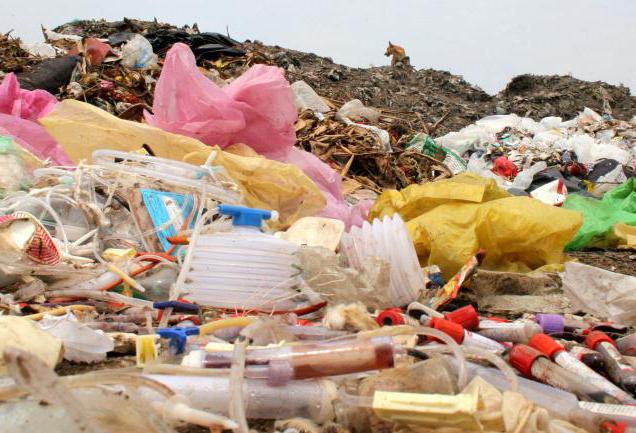
The main danger of waste of all categories from medical institutions lies in their biological component. Almost all of them contain pathogenic microorganisms that easily enter the air during open burning, into groundwater and soil during burial. Spreading for miles around, they jeopardize the population, domestic and wild animals. There is a high probability of epidemics. The whole civilized world at the present stage of development destroys medical waste only in a high-temperature thermal way. In Russia, some of them (especially plastic products) are still neutralized and processed, which is absolutely unacceptable.
Medical waste classification
The division of medical waste into classes according to the degree of toxicological, radiation and epidemiological danger into five classes became possible as a result of the adoption in 1999 of SanPiN 2.1.7.728-99.
- Non-hazardous (class “A”) - non-toxic waste that did not have contact with patients (infectious) and various biological fluids. For example, inventory, furniture, diagnostic equipment, construction waste that does not contain toxic elements, etc.
- Hazardous (class “B”) - potentially infected medical waste. These include, in particular, tools and materials contaminated with biological secretions, including blood and much more (about how the storage, disposal of class “B” wastes is carried out later in the article).
- Extremely hazardous waste (class “B”) - materials that were in contact with patients infected with especially dangerous infections. For example, TB hospitals.
- Toxicologically dangerous (class “G”) - in their composition and properties they are close to industrial preparations. These are medicines, disinfectants, cytostatics, chemicals, devices and items containing mercury.
- Radioactive waste belongs to the class “D”.
Class B medical waste
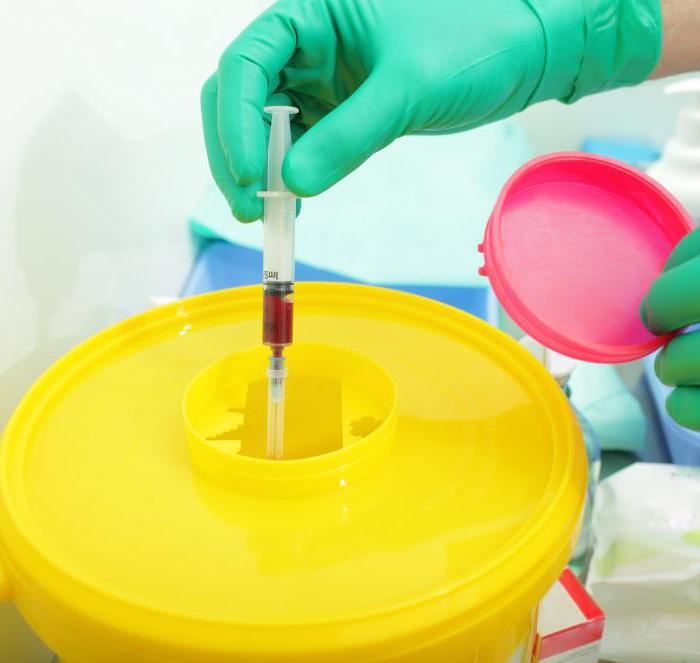
Wastes from medical institutions falling into category “B” are regarded as hazardous from an epidemiological point of view. Their collection, storage, transportation and disposal must be carried out in strict accordance with legislatively adopted sanitary rules.Class B includes: waste from the pathological departments and offices, organic materials from operating rooms, food residues from infectious diseases hospitals, materials and objects that interacted with patients' biological fluids, and other infected and potentially dangerous workings.
Class B waste disposal is relevant for the institutions in which it is formed, including microbiological laboratories, clinical diagnostic departments, pharmaceutical companies working with bacteria 3-4 g. pathogenicity, vivariums. Various vaccines with live microorganisms that have become unsuitable for any reason, for example, with an expired shelf life, belong to this category.
Class B Waste Management: Collection
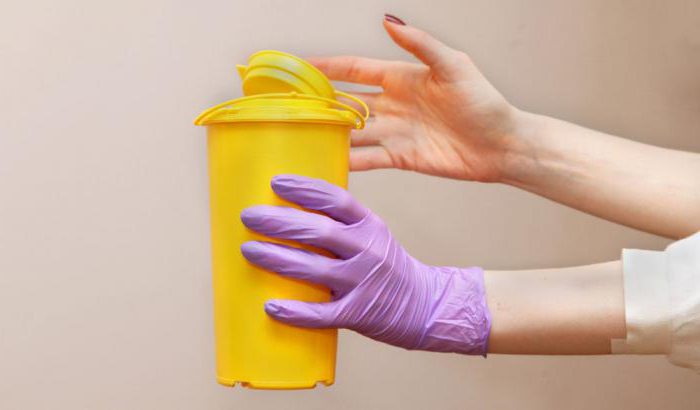
The collection of medical waste belonging to the category of hazardous (class “B”) is carried out in special containers (containers, bags) with a yellow marking. They can be reusable or disposable. The package must indicate: the name of the institution, structural unit, name and signature of the person responsible for this work. Containers (packages) for medical waste should have the following set of qualities:
- moisture resistance;
- strength, they should not be punctured with sharp cutting or pricking objects;
- tight-fitting lid or locking mechanism; for organic and liquid raw materials - tightness.
Containers and bags for medical waste are filled only on ¾ of the total volume. The responsible employee closes the containers with special devices that prevent rash. As a rule, tags are used.
Waste collection requirements
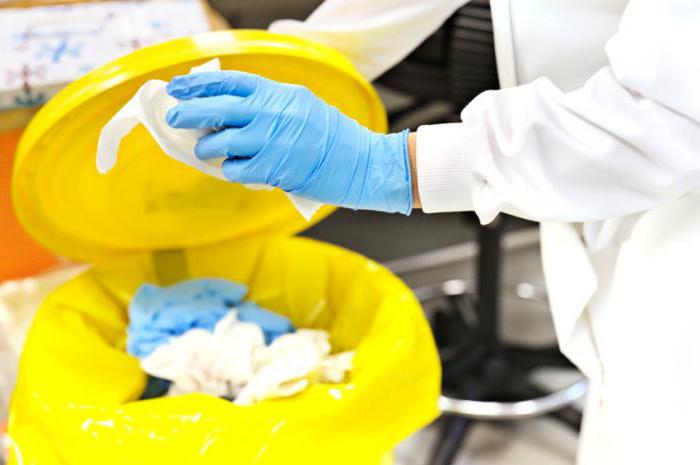
There are a number of rules that SanPiN establishes, their compliance with the collection of hazardous waste in a medical institution is mandatory. It is forbidden to influence or destroy raw materials in any way to facilitate the further disinfection process (cutting, grinding, etc.), handling unpacked waste materials (moving around the territory, transferring from one container to another, etc.), interacting with waste without PPE, ramming, placing filled bags at a distance of less than 1 m from the heating system, heaters, use soft containers for pricking and cutting objects.
Waste Transportation
When transporting medical waste, certain requirements must be observed. So, soft-type containers must be fixed on specially equipped trolleys. Solid containers tightly closed with lids. Waste of class “B” waste must not be transported in open containers. Disposal (SanPIN 2.1.7.728-99) and removal is carried out only by organizations specializing in this, which have special licenses for this type of activity. The institution concludes a contract for the performance of services.
Transportation of filled disposable containers for medical waste through the territory of a medical facility should be carried out only in reusable containers installed on a special trolley. This prevents packet corruption.
Class B Waste: Disinfection
The disposal or storage of medical waste is the final step in the process. It is preceded by a disinfection procedure. According to the requirements of SanPin, it can be skipped only in the case of organic waste that is destroyed by incineration. The medical institution determines the disinfection methods independently at the time of development of a scheme for managing the generated waste. The choice is based on the specifics of the organization, the availability of technological capabilities.
There are two methods of disinfection: centralized and decentralized. In the first case, the place of processing is outside the territory of the institution. In this case, the procedure is carried out by an external organization on the basis of a concluded agreement.With a decentralized approach, the process is carried out on the territory of a health facility.
Thus, the disposal of class “B” wastes is possible only after their disinfection. There are two processing methods in accordance with legislative requirements: hardware (exposure to raw materials of steam, radiation and electromagnetic radiation), chemical (disinfectants).
Disposal process
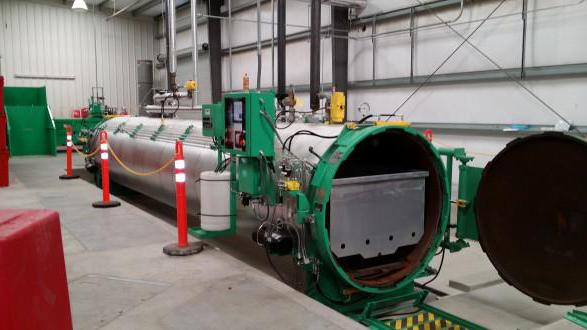
Class B waste disposal can be carried out in two ways: incineration and burial in a specially designated area, which is not suitable for agricultural activities.
The most common destruction methods are as follows:
- steam disinfection at temperatures above 100 ° C and at high pressure;
- processing various types of radiation or microwaves;
- disinfection with chemicals;
- incinerator burning.
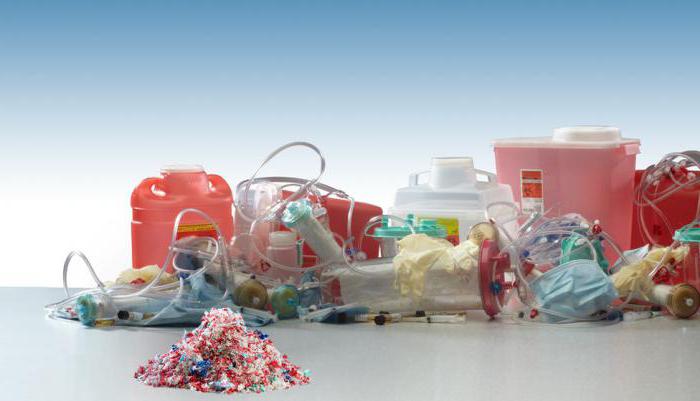
In order to make sure that the disinfection process was complete and successful, special tests are carried out on the ability to recultivate (revive) dangerous biological strains. In case of a negative sample, solid medical waste is transported to the solid waste landfill along with ordinary household waste, and liquid is drained into the sewer.








